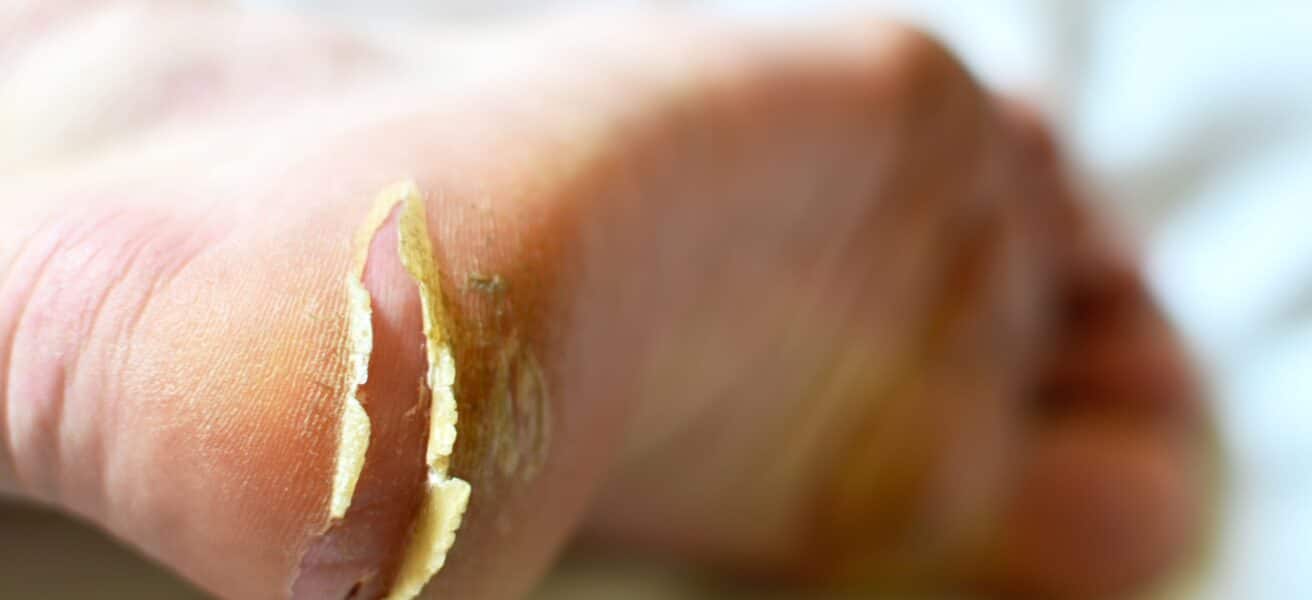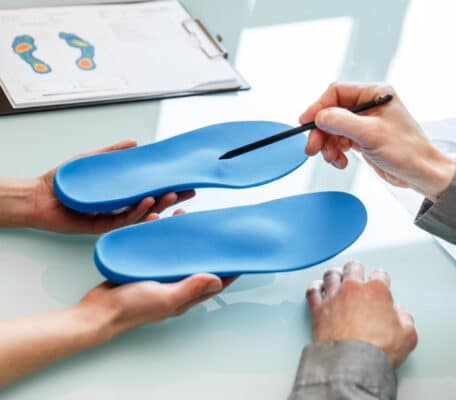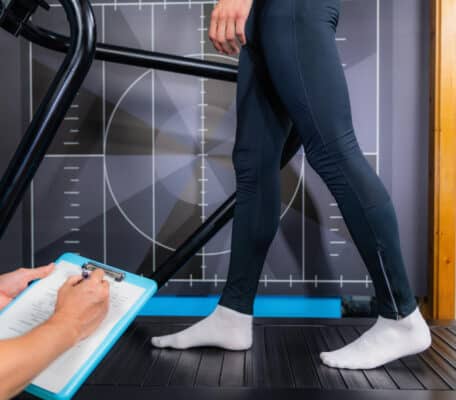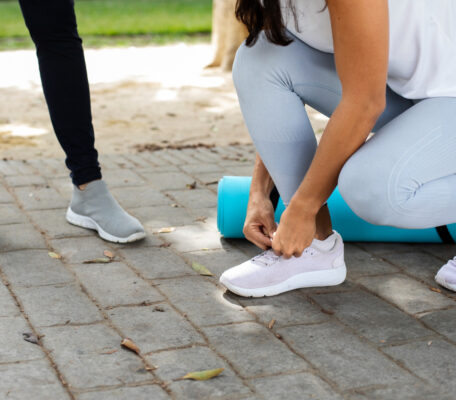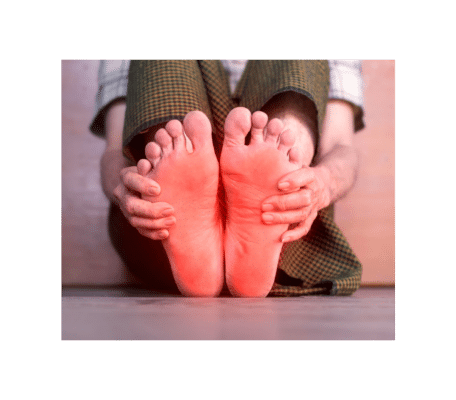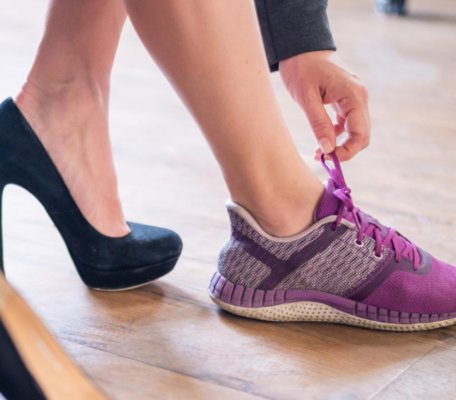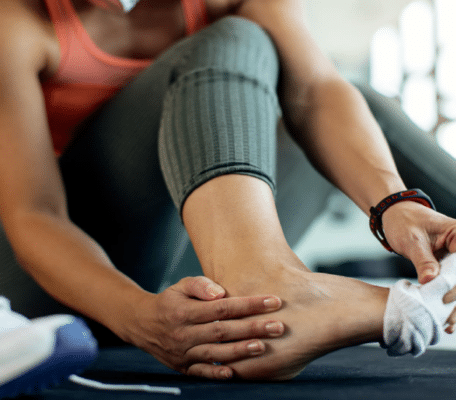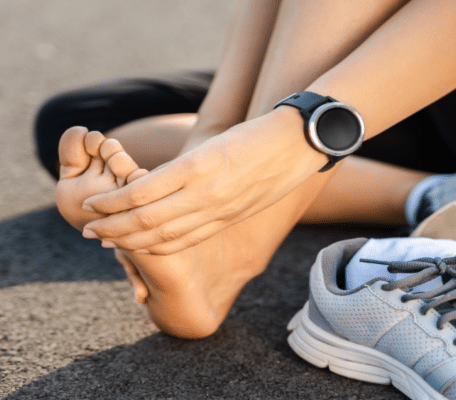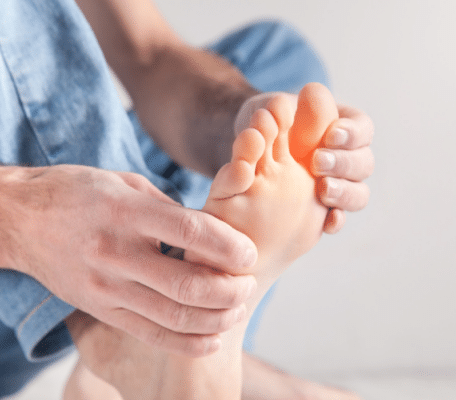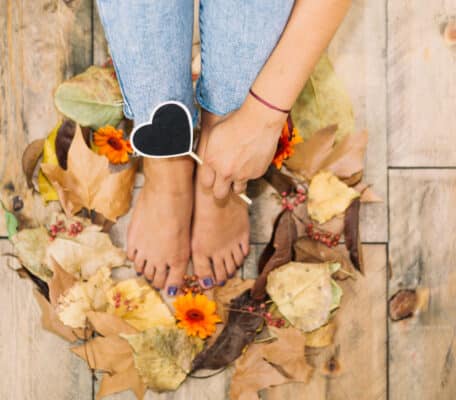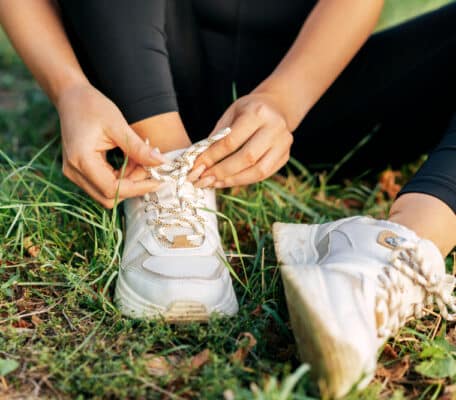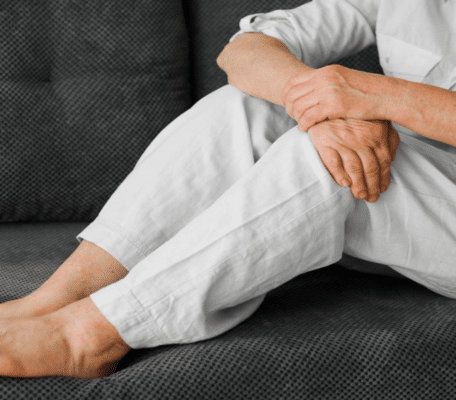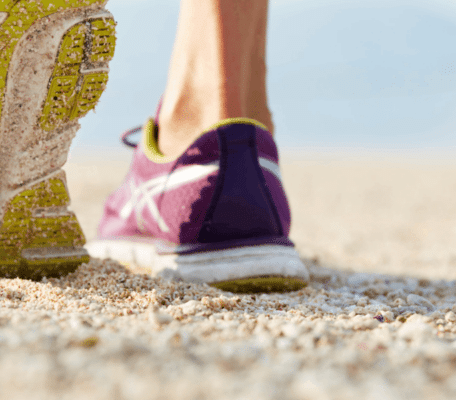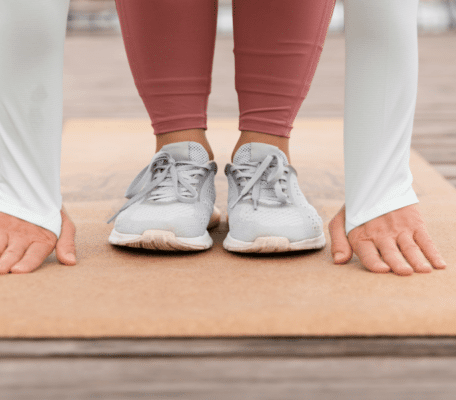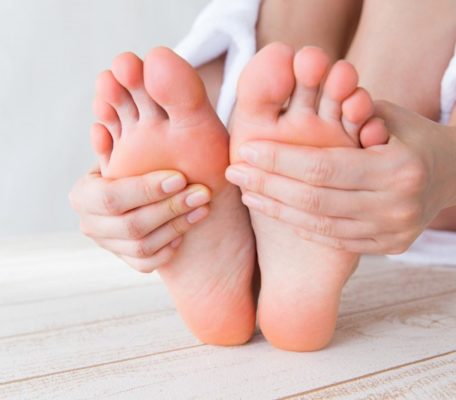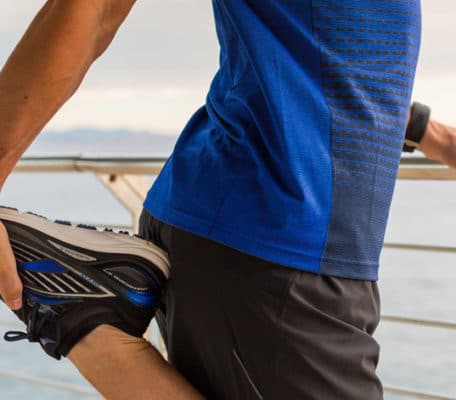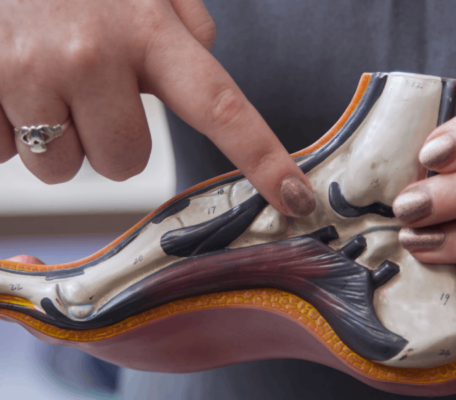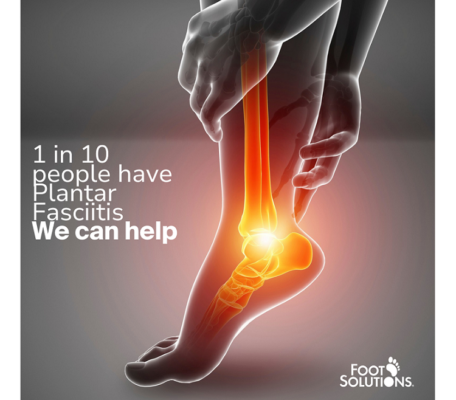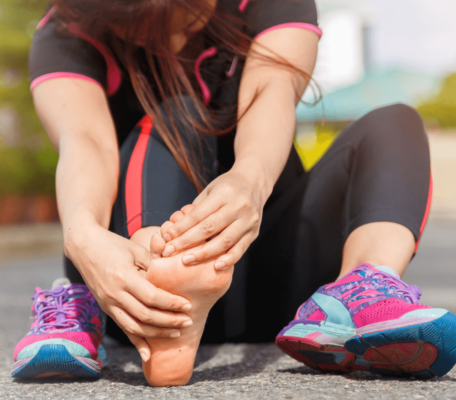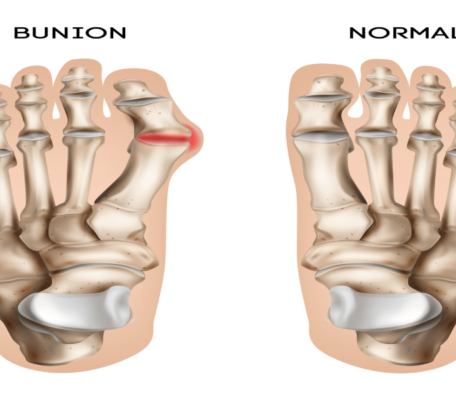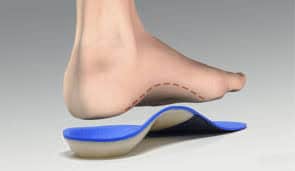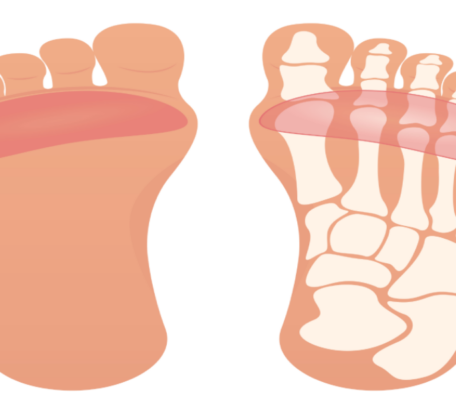Foot problems can get you down, and there’s nothing more common or unpleasant than the dry, cracked feet that winter so often brings. From unsightly cracked heels to more serious issues such as foot pain, the winter season can make maintaining our foot health a challenge.
But with the right knowledge and routine, you’ll be putting your best foot forward in no time. At Foot Solutions, we are specialists in healthcare that starts from the ground up. Whether you have questions about plantar fasciitis, how to treat cracked heels, or athlete’s foot, we are here to help. This is our guide to the ultimate winter footcare routine.
What happens to our feet in winter?
In winter our feet work hard. They spend a lot of time wearing shoes designed to withstand cold weather. These are often not particularly breathable, and if they are poorly fitting shoes they can make your feet sweat, leading to conditions such as athlete’s foot.
Whereas in summer your feet are more likely to enjoy time in the sunshine in sandals, winter heralds at least six months of confinement proper shoes. Ill fitting shoes are one of the leading causes of poor foot health, and can cause foot problems from heel spurs to mallet toe, foot blisters to an ingrown toenail.
But perhaps the most common winter foot condition is dry, cracked skin.
What are the problems with dry feet and cracked heels?
Dry, cracked skin is unpleasant. You might feel self-conscious in any environment where you need to get your feet out, whether that is the swimming pool or the gym. Getting “foot dandruff” on your socks is unsightly and embarrassing!
But beyond this, winter skin can also be uncomfortable and even cause pain. It can lead to further foot problems, such as an increased likelihood of infection.
Moisturize daily
A good moisturizing cream can go a long way towards easing your dry feet. Uric acid is the vital ingredient to look for when searching for the right product. Uric acid occurs naturally in our skin, aiding moisture content and promoting good health. It guards against conditions such as eczema as well as combatting extreme dryness.
Other qualities to look out for when buying a moisturizer for your feet include a fast absorption time, as you won’t be able to move around until the product has sunk in! Those with allergies should carefully check the list of ingredients.
Get the right footwear
Poor fitting shoes have a lot to answer for. If your shoes do not fit properly, you can soon find yourself with dry uncomfortable feet from repeated rubbing – as well as other symptoms that could lead to more serious foot problems.
Tight, ill fitting shoes can not only affect the health of your skin, but can also lead to conditions such as claw toe (where the toe bends downward); plantar fasciitis; ingrown toenails; a heel spur; and many other persistent and painful issues.
Make sure it’s winter-proof
When it comes to treating cracked heels, one of the most important factors is keeping your skin dry. If your shoes aren’t waterproof, the rain and snow of winter will get in and create the moist environments beloved by bacteria. Cracked heels leave you more vulnerable to infection – and a fungal infection such as athlete’s foot can look exactly like dry skin.
Athlete’s foot is a fungal infection that not only damages the skin. It causes itching and burning pain in your feet, and can then spread throughout the rest of the body. Frequent changing of the socks and excellent foot hygiene are key ways to prevent athlete’s foot from establishing itself.
If you have athlete’s foot you will need to treat it with an anti-fungal medicine – if you mistake it for dry skin, all the moisturizing in the world won’t solve your problem.
Seek advice
If you feel that moisturizing and taking good care of your feet isn’t helping your foot problems, it might be time to see a specialist.
Foot infections can present as cracked heels, but if left untreated could turn into something more serious. A healthcare professional may be the best solution. A foot specialist will be able to identify if your cracked heels are actually a symptom of something that needs further treatment.
Don’t forget your socks!
While the right footwear is a key way to care for your dry feet and prevent infection, this doesn’t stop at your shoes. Your socks also play an important role in your health feet regime. Regularly change your socks, as it will help to keep your feet clean and dry, minimizing damage. Look for breathable, natural materials such as cotton, that won’t encourage sweating and will be soft against your skin.
Socks that do not fit are likely to lead to further problems such as blisters and rubbing. Irritating for most people – but for those with a compromised immune system, this could become really serious. A callus could develop into a non-healing wound, which in turn could cause a blood infection or even the need for amputation.
Keep an eye on your feet
Regularly inspect your feet to check on their condition. Be particularly alert for cracks or wounds which will provide an easy entryway for bacteria and viruses.
If you find your feet have become so damaged that dead skin and cracks are vulnerable to infection, invest in a specialist foot spray that can help heal those openings fast.
Use a foot file
Think of it as a pleasant, spa-like experience. The perfect excuse for regular long hot baths, plenty of warm water, and wearing comfortable slippers. At the end of your bath, use a foot file – a bit like an emery board for your feet – to get rid of the worst of the dead skin and prevent build up of too much skin.
However – do be careful! The aim is to target hard skin and reduce cracks – not create more injuries by taking a cheese grater to your feet! Be gentle and use a tool recommended by your footcare professional.
Be alert to other’s hygiene practices
Talking of spas, it’s important to be aware that foot pain and problems can be made much, much worse if you expose your feet in an area with poor hygiene standards. Spas should always sterilize their equipment – be wary that you are getting your pedicure somewhere with excellent cleanliness procedures in place. Similarly, your swimming pool and gym should be very conscientious with floor cleanliness – you don’t want to pick up a medical condition simply by walking there bare foot.
Take foot health seriously
Whether you stand for long periods or you wear high heels all the time, you should be aware of the activities you undertake that will affect your foot health. From your plantar fascia to your big toe joint, your third and fourth toes to your heel bone, your feet can have a huge impact on your overall health and wellbeing.
Visiting a professional chiropodist or taking a trip to foot specialists such as Foot Solutions is a great place to start. Whether you have an overuse injury such as plantar fasciitis, heel spurs, ingrown toenails or flat feet, seeking professional help can reduce pain and heal the affected area.
Don’t let winter feet slow you down!
Come to Foot Solutions today.
Winter dryness, cracked heels and related foot problems commonly affects most people during the winter months. At Foot Solutions, we can help. Whether you need foot pads or orthotic inserts, physical therapy, treatment for cracked heels or high arches, our foot specialists know how to relieve pain and improve your health from the ground up.
With a range of treatment options and a friendly team trained to solve foot pain, we’ll get the spring back into your step in no time.

